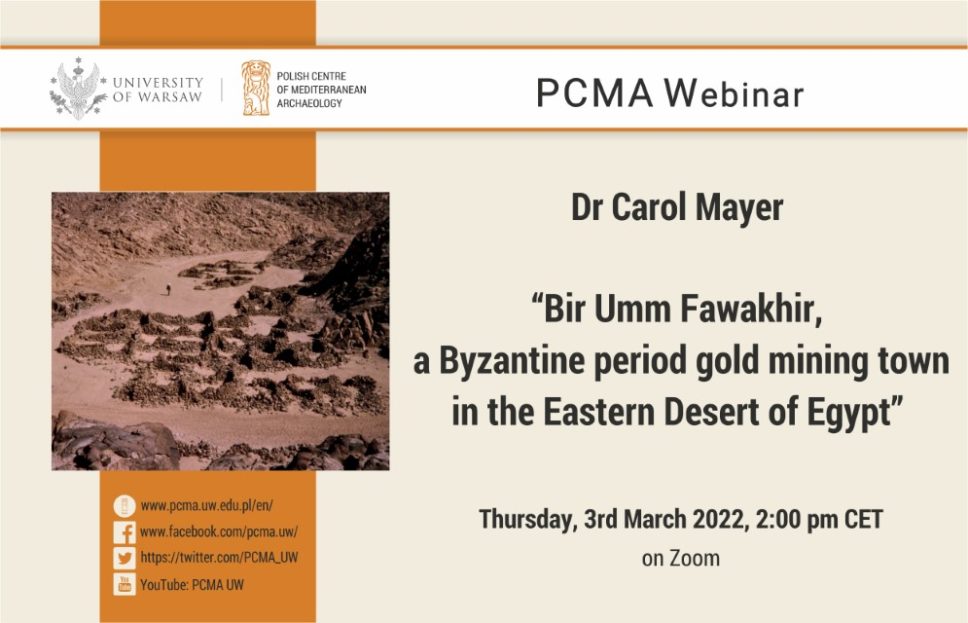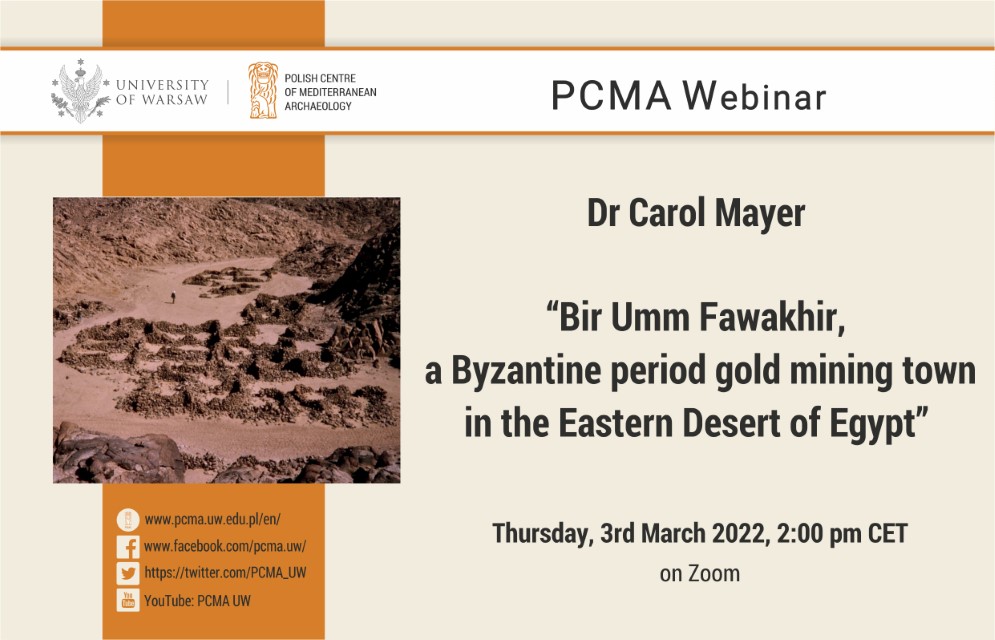Another PCMA Seminar will be hosting Dr. Carol Meyer. Her talk continues the thread of natural resource exploitation in the Eastern Desert in antiquity covered in previous seminars. This time it will take a closer look at the functioning of the Byzantine Bir Umm Fawakir settlement and the customs of its inhabitants. The site, surveyed between 1992 and 2000, is one of the better-recognized gold mining centers in eastern Egypt.
Abstract: “Bir Umm Fawakhir, a major 5th–6th century Byzantine period gold mining town, lies in the central Eastern Desert of Egypt about 5 km from the Wadi Hammamat. The site, which was investigated by the Oriental Institute of the University of Chicago between 1992 and 2000, is remarkably complete and well preserved. All 237 structures of the Main Settlement were mapped on either side of a long narrow wadi, as well as fourteen outlying clusters of ruins of the same date, wells, guardposts, and mines. Excavations were very limited, but they revealed a great deal of information about life in the ancient town. Mining the gold was very hard; it occurs in quartz veins in granite. Recovering gold therefore required hard rock mining, ore reduction, washing, and a complicated, multi-step smelting process with lead (cupellation). In addition, earlier remains from the late New Kingdom, Ptolemaic, and Roman periods were found here and in the nearby Wadi el-Sid.
Dr. Carol Mayer has been associated with the Oriental Institute at the University of Chicago for most of her archaeological career. She has conducted excavations in Mexico, Jordan, Syria, Egypt, and Sudan. Her research focuses on long-distance trade. She is currently preparing the publication of a corpus of glass finds from excavations in Aqaba, Jordan.”
The seminar will be held online on Zoom on Thursday, March 3rd, 2022 at 2 pm CET.
For a link, please write to Dr. Mariusz Gwiazda at m.gwiazda2@uw.edu.pl
Recording of the seminar has been made available on the PCMA UW YouTube channel.


